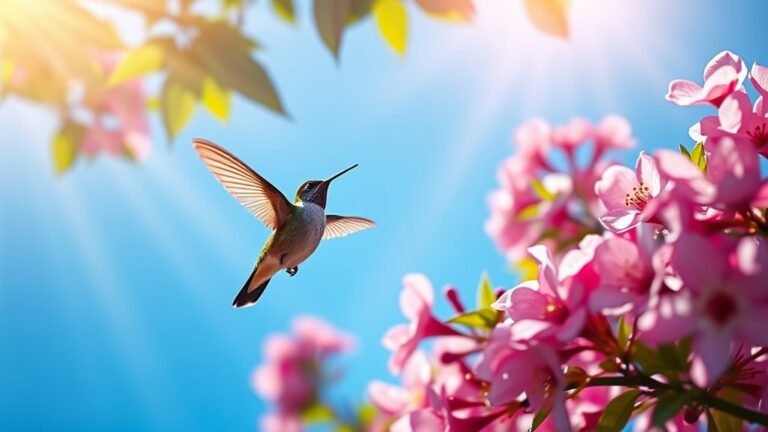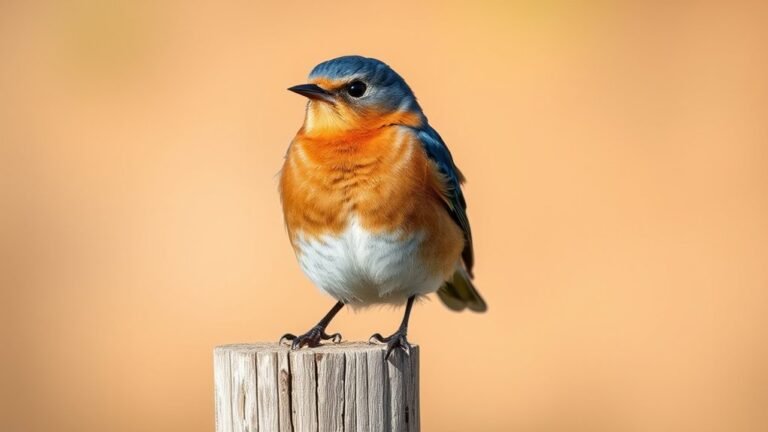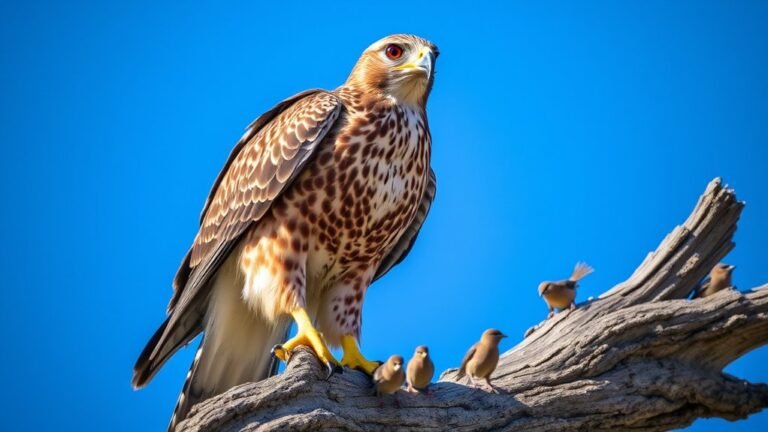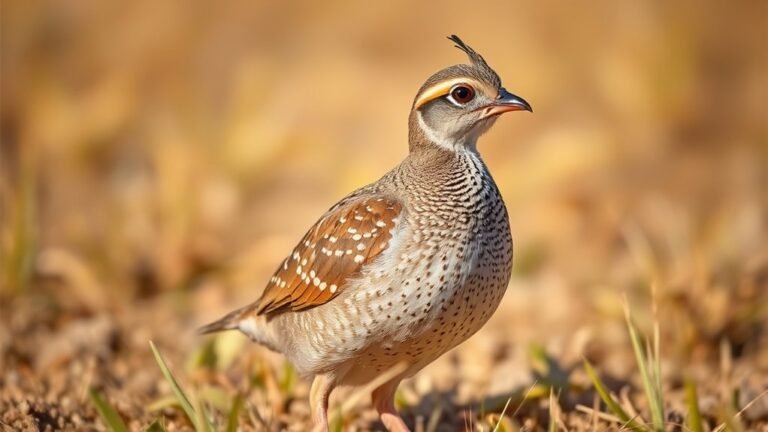Do Geese Really Have Teeth?
Do Geese Really Have Teeth?
When you look at a goose, you might notice it doesn't have teeth. Instead, geese have special ridges on their bills. These ridges help them grip food and chew it well. This helps geese eat different kinds of plants.
Understanding these cool features can show us how geese find food and survive in different places. It's interesting to think about how these adaptations help them live in lakes, ponds, and fields.
A Quick Overview
Geese don't have real teeth like people. Instead, they have serrated ridges on their bills. These ridges help them grab and hold onto their food when they eat. The sharp edges on their bills make it easier for geese to cut through tough plants. They have wide, flat bills that are just right for munching on grass and plants in the water.
Since geese don't have teeth but have these ridges, they use less energy when they eat. This way, they can find and enjoy their meals more easily! Geese are quite interesting, don't you think?
Understanding Goose Anatomy

Geese are interesting birds, and knowing about their bodies can help us understand how they live. Their long necks let them eat grass and plants that grow underwater.
Geese have a special breathing system that helps them get enough air when they're flying. Their webbed feet act like paddles, making it easy for them to swim in water. Plus, the strong muscles around their beaks help them find food, which is important for what they eat.
When we learn about these body parts, we see how geese have changed to fit their homes. This knowledge can help us appreciate these amazing creatures more!
The Myth of Teeth in Geese

Have you ever heard someone say that geese have teeth? This is a common myth, but it's not true! Geese don't have teeth like we do. Instead, they've special ridges on their bills. These ridges help them grab and hold onto food.
Many people get confused and think these ridges are teeth. It's an easy mistake to make! Learning about goose anatomy can help clear up this misunderstanding. Geese use their bills mainly for foraging, not for chewing food like we do.
Next time you see a goose, you can share this interesting fact! By spreading the truth about geese, you help others understand these amazing birds better.
Let's work together to share correct information about wildlife!
The Function of Serrated Ridges
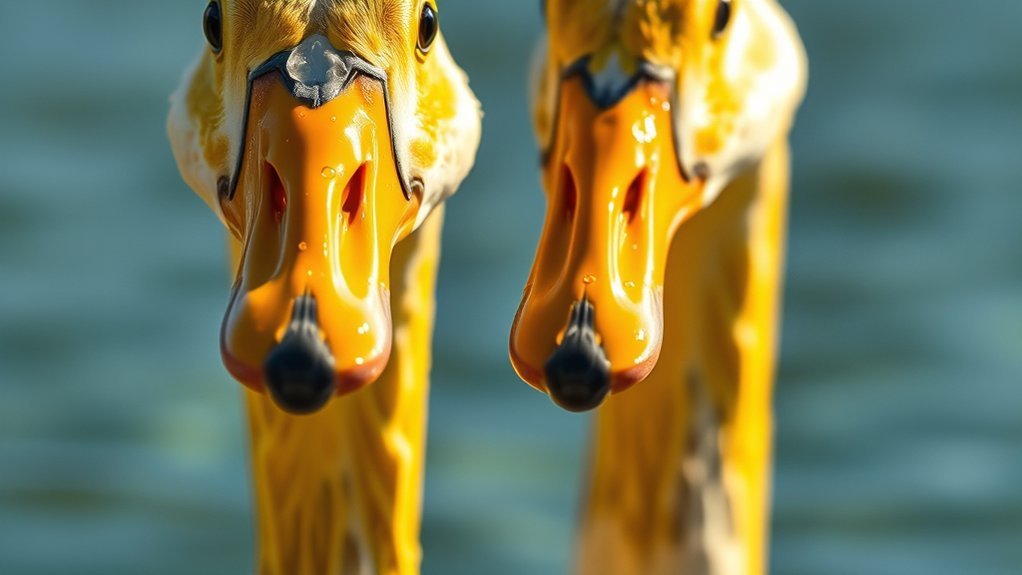
Serrated ridges on a goose's bill are more important than you might think. These ridges work like little tools. They help geese catch and handle food better.
When geese look for food in the water, the ridges allow them to grab plants, seeds, and other goodies easily. These serrated edges can cut through tough plant materials, making it easier for geese to eat. This means they don't waste a lot of energy trying to get their meals.
They can enjoy a wide variety of foods, which helps them stay healthy and strong. Also, the ridges stop food from slipping away. This way, geese can eat more during their feeding times.
Learning about these ridges shows how nature helps birds like geese find food easily. It's a great example of how animals adapt to survive.
How Geese Feed in the Wild
Geese are interesting animals, especially when it comes to how they find food in the wild. They can eat in many different ways. Sometimes, they graze on grass. Other times, they nibble on plants that grow in the water. They can even dabble around to look for seeds and grains.
Geese have strong bills that help them pull leaves and stems from plants. What they eat can change with the seasons. In warmer months, they like to eat fresh, green plants that are full of nutrients. When it gets colder, they often eat stored grains and seeds.
This ability to adapt helps geese live in many different places. They also enjoy foraging together in groups. This social behavior helps them connect with one another, and they share information about where to find food within their flocks.
Geese feed in ways that keep them healthy and strong. Their teamwork makes their feeding time not just a meal, but a fun activity!
Comparison With Other Birds
Geese are special birds that have some things in common with other birds, but they're also quite different. For example, geese have wide, flat bills. These bills help them eat grass and plants easily.
They like to eat in groups, which helps keep them safe and strong as a community.
Ducks, on the other hand, eat different kinds of food and have different beaks for dabbling in water. Geese are really good at getting plants from both land and water, which helps them find food easily.
This way of eating also affects how they migrate when the seasons change.
Learning about how geese differ from other birds makes us appreciate them more. They're interesting creatures with their own special ways of living!
The Evolution of Goose Beaks
How have goose beaks changed to help them eat? Goose beaks have adapted in special ways to match what they like to eat. Their wide, flat bills help them munch on grass and water plants. This shape lets them eat more while using less energy.
Over time, geese have learned to pick out the plants that are good for them, and their beaks have changed to help with that. These changes show how living things connect with their surroundings.
What Do Geese Eat?
Geese eat mostly plants. They've special beaks that help them eat different kinds of vegetation. The food they like changes with the seasons.
In summer, geese enjoy tasty water plants and green grasses.
When it gets colder, they start eating more grains and look for fields and crops to find food. Their plant-based diet gives them the nutrients they need.
When you watch geese, you might see them grazing. They've clever ways to find and eat food so they can stay healthy.
Learning about what geese eat helps you understand these interesting birds better!
The Role of Bill Structure in Feeding
The bill of a goose is special and helps it find food in smart ways.
Let's look at the main features of a goose's bill that make it a great eater:
- Flat Shape: The flat shape helps the goose filter water to find plants and small creatures easily.
- Serrated Edges: The edges of the bill are sharp, so even without teeth, the goose can grip and tear plants.
- Wide Opening: A big bill lets geese eat larger food pieces, which means they can enjoy a variety of meals.
- Flexible Structure: The bill can bend, so geese can reach food even in tricky spots.
These unique features help geese live well in their homes.
It shows how their bodies and eating habits work well together. Geese are interesting because their bills help them survive and enjoy different foods!
A Closer Look at Waterfowl Adaptations
When you watch waterfowl, you can see many cool ways these birds adapt to live in different places.
Waterfowl come in many types, and they've different ways to find food. For example, dabbling ducks have wide bills that help them eat plants in the water. Diving ducks are built to go underwater and catch fish. Geese like to eat grass and other plants on land.
The shape of their bills and how they move are made for their specific habitats. These unique traits show us how important each bird is to its home.
Each species of waterfowl has a special job that helps the whole group. It's fun to watch how they interact and support each other in their environment!
Impact of Diet on Goose Behavior
Diet has a big impact on how geese behave. When we watch these birds, we can see that what they eat can change how they act.
Here are some important points to consider:
- Food Availability: If there's plenty of food around, geese will change how they look for it. They might move to new areas or try different types of food.
- Nutritional Value: Foods that are rich in nutrients can make geese friendlier and less aggressive. When they eat well, they tend to get along better with each other.
- Seasonal Variations: As the seasons change, so does their diet. This can affect when they migrate and how they interact in groups.
- Social Learning: Young geese often watch older geese to learn what to eat. This helps them choose food based on what they see others eating.
Understanding these points can help us learn more about how geese live and interact with each other.
Fascinating Facts About Geese
Geese are really interesting birds. They show many unique behaviors and traits that make them special.
One cool thing about geese is how they migrate. You can often see them flying in a V-shape. This helps them save energy and stay in touch with each other while flying.
Geese are very social. They like to be with their family and friends, especially during breeding season. They often return to the same nesting spots each year, showing their loyalty. Their sounds help them stay connected and work together as a group.
Learning about these traits helps us appreciate geese more. They play an important part in our ecosystems and are enjoyable to watch for nature lovers.
Geese are truly fascinating animals!
Frequently Asked Questions
Can Geese Bite Humans Effectively With Their Beaks?
Geese can bite humans. They have strong beaks that can cause pain. They usually bite when they feel scared or threatened. This is just their way of defending themselves. When you understand how geese act, you can be safe around them.
If you see a goose, give it space. Don't get too close, especially if it has babies nearby. Respecting their space helps keep both you and the goose safe.
Geese can be interesting to watch. They often make funny sounds and walk in groups. Just remember to be respectful and careful. That way, you can enjoy seeing these birds without any trouble!
How Do Geese Use Their Beaks for Communication?
Geese use their beaks to talk to each other in simple ways. They open and close their beaks to show feelings. This helps them stick together as a group. When they use their beaks, they can coordinate what they do and keep their flock united.
Are Goose Teeth Harmful to Their Food Source?
Goose teeth, or more correctly, their beaks, do not harm the plants they eat. Instead, geese have special feeding habits that help them eat grasses and water plants easily. They can graze without hurting their food source, which lets them stay healthy and thrive. So, their beaks work well for them and the plants they enjoy!
Do Geese Ever Lose Their Serrated Ridges?
Geese do not lose their serrated ridges as they grow older. However, their ridges can wear down over time. This wear happens as they eat and use their beaks. When the ridges get worn, it makes it harder for them to find and get food. This can affect their health. Older geese might struggle more to eat, which can make it tough for them to survive.
How Does Weather Affect Goose Feeding Behavior?
Weather affects how geese eat and move around. When the weather is nice, geese like to search for food more. They are busy filling their bellies with grass and seeds. But when the weather gets really bad, like during snowstorms or heavy rain, they slow down. They hold back and save their energy. This change can make them eat at different times and in different places. Understanding how weather impacts geese can help us know where to find them and how they behave.

Luna is the passionate founder and author of Birds and You, a website dedicated to sharing her love for birds with fellow enthusiasts. Through her engaging articles and guides, she aims to educate and inspire others to explore the fascinating world of birds. When she’s not writing, you can find Luna observing birds in their natural habitats or sharing beautiful bird photography on Pinterest. Join her on this journey to celebrate and protect our feathered friends!


